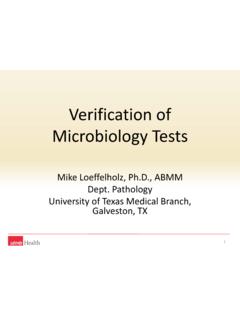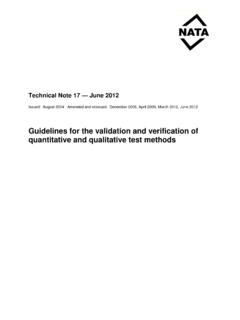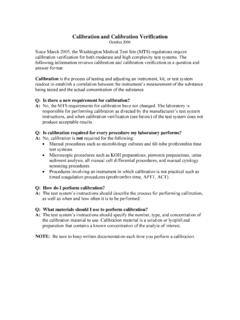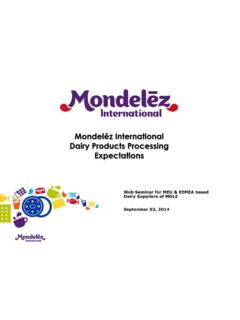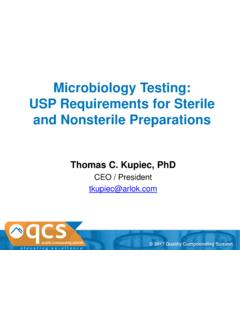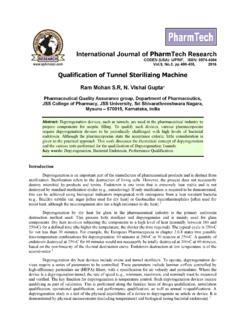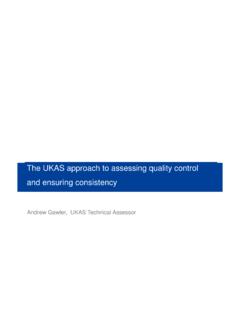Transcription of Heterotrophic Plate Count Measurement in …
1 world health OrganizationSustainable Development andHealthy EnvironmentsHeterotrophic Plate Count Measurement in Drinking Water Safety ManagementGeneva 24-25 April 2002 Protection of the Human EnvironmentWater, Sanitation and HealthGeneva, 2002 WHO/SDE/ onlyWHO/SDE/ onlyHETEROTROPHIC Plate Count MEASUREMENTIN DRINKING WATER SAFETY MANAGEMENTR eport of an Expert MeetingGeneva, 24-25 April 2002 Water, Sanitation and HealthDepartment of Protection of the Human EnvironmentWorld health OrganizationGenevaHeterotrophic Plate Count Measurement in Drinking Water Safety Management world health organization 2002 The illustration of the cover page is extracted from Rescue Mission: Planet Earth, Peace ChildInternational 1994; used by permissionAll rights information material is intended for a restricted audience only.
2 It may not be reviewed, abstracted,quoted, reproduced, transmitted, distributed, translated or adapted, in part or in whole, in any form orby any OF CONTENTS PageBackground .. to the of Definitions and Applications in piped water Applications/uses in non-piped and other water health Outstanding questions and 1 List of Role of HPC Measurement in Drinking Water QualityManagementBackgroundA group of microbiology and public health experts including regulatory and medical expertise wasconvened in Geneva, Switzerland, 25-26 April 2002 to consider the utility of Heterotrophic PlateCount (HPC) measurements in addressing drinking water quality and safety. The group was convenedfollowing the NSF International/ world health organization Symposium on HPC Bacteria in DrinkingWater Public health Implications?
3 The meeting was attended by 31 participants from Australia, Canada, France, Germany, Italy, Japan,the Netherlands, South Africa, Switzerland, UK and USA (see Annex 1).IntroductionDr Jamie Bartram opened the meeting and thanked health Canada, Centers for Disease Control andPrevention, US Environmental Protection Agency and American Water Works Association ResearchFoundation for providing financial support. Dr Martin Exner was elected Chairman and Drs JosephCotruvo and Axel Glasmacher as joint report provides an assessment of the public health significance of " Heterotrophic Plate Count "(HPC) measurements in drinking-water quality management, based on a review of presently availableinformation and experience by an international group of experts.
4 It deals with evidence concerning: The relationship of HPC to health risk for the general public. The role of HPC as an indirect indicator or index for pathogens of concern in drinking-water. The role of HPC in assessing the efficacy and proper functioning of water treatment and supplyprocesses. The relationship of HPC to aesthetic acceptability of drinking scope of the report deals with safe water supply, extending from source to consumer, includingplumbed-in devices, domestic and building environments, and water supplied in bottles or different uses for which drinking water may be used in the home are considered and specificconcerns in higher risk settings and populations at increased risk are to the meetingThe agenda of the meeting is included in Annex of Meeting1.
5 Definitions and Drinking waterWHO considers that 'drinking water' should be 'suitable for human consumption and for all usualdomestic purposes including personal hygiene'. Diverse regulatory agencies adopt similardefinitions. Drinking water should therefore be suitable for consumption, washing/showering anddomestic food preparation. In human health terms, exposure to water and its constituents can occurthrough ingestion, contact and aerosol waters should be safe for lifetime use, taking account of differing sensitivities that occuracross life stages, but all are not necessarily suitable for individuals suffering from certain specificimmune compromising drinking water supplies typically involve source abstraction, treatment and distribution.
6 Thelatter may include ancillary devices at domestic or institutional levels such as softeners, activated2carbon treatment, vending machines, dispensers etc. Drinking waters also include those obtainedfrom non-piped sources such as springs and community wells, in bottles and as control of faecal contamination in drinking water systems and sources where it occurs, is ofprimary importance. Faecal- specific indicator bacteria such as E. coli are the parameters of firstimportance in monitoring faecal Heterotrophic Plate countHeterotrophs are broadly defined as microorganisms that require organic carbon for growth. Theyinclude bacteria, yeasts and moulds. A variety of simple culture-based tests which are intended torecover a wide range of microorganisms from water are collectively referred to as "heterotrophicplate Count " or HPC test procedures.
7 Accordingly, the terms heterotroph and HPC are is no universal 'HPC Measurement '. Although standardized methods have been formalised, HPCtest methods involve a wide variety of test conditions that lead to a wide range of quantitative andqualitative results. Temperatures employed range from around 20 to 40 C, incubation times from afew hours to 7 days or a few weeks, and nutrient conditions from low to high. The test itself does notspecify the organisms that are a small proportion of the metabolically active microorganisms present in a water sample maygrow and be detected under any given set of HPC test conditions, and the population recovered willdiffer significantly according to the method used.
8 The actual organisms recovered in HPC testing canalso vary widely between locations, seasons and between consecutive samples at a single recovered through HPC tests generally include those that are part of the natural(typically non-hazardous) microbiota of water; in some instances they may also include organismsderived from diverse pollutant Microbial growth in waterMicroorganisms will normally grow in water, and on surfaces in contact with water as following drinking water treatment is normally referred to as 'regrowth'. Growth is typicallyreflected in higher HPC values measured in water samples. Elevated HPC levels occur especially instagnant parts of piped distribution systems, in domestic plumbing, in bottled water and in plumbed-indevices such as softeners, carbon filters, and vending machines.
9 The principal determinants ofregrowth are temperature, availability of nutrients, and lack of residual disinfectant. Nutrients mayderive from the water body and/or materials in contact with Use of HPC in water managementHPC testing has a long history of use in water microbiology. At the end of the 19th century HPC testswere employed as indicators of the proper functioning of processes (and of sand filtration inparticular) and thereby as indirect indicators of water safety. Use as a safety indicator declined withthe adoption of specific faecal indicator bacteria during the 20th measurements nevertheless continue to figure in water regulations or guidelines in manycountries. HPC measurements are used: to indicate the effectiveness of water treatment processes, thus as an indirect indication ofpathogen removal; as a measure of numbers of regrowth organisms that may or may not have sanitary significance;and as a measure of possible interference with coliform measurements in lactose-based culturemethods.
10 This application is of declining value as lactose-based culture media are being replacedby alternative methods that are Applications in piped water Water Safety PlansThere is an increasing trend toward application of a comprehensive 'Water Safety Plan' (WSP)approach to drinking water supply safety management. This approach is applicable throughout thewater supply from catchment to has been proposed that WSP approach be included in the next edition of the WHO Guidelines forDrinking-water Quality and that this would entail five quality targets based upon public health protection and disease System assessment to determine whether the water supply chain (up to the point of consumption) as a whole can deliver water of a quality that meets the defined Monitoring of the steps in the supply chain which are of particular importance in securing safe drinking plans documenting the system assessment and monitoring.










